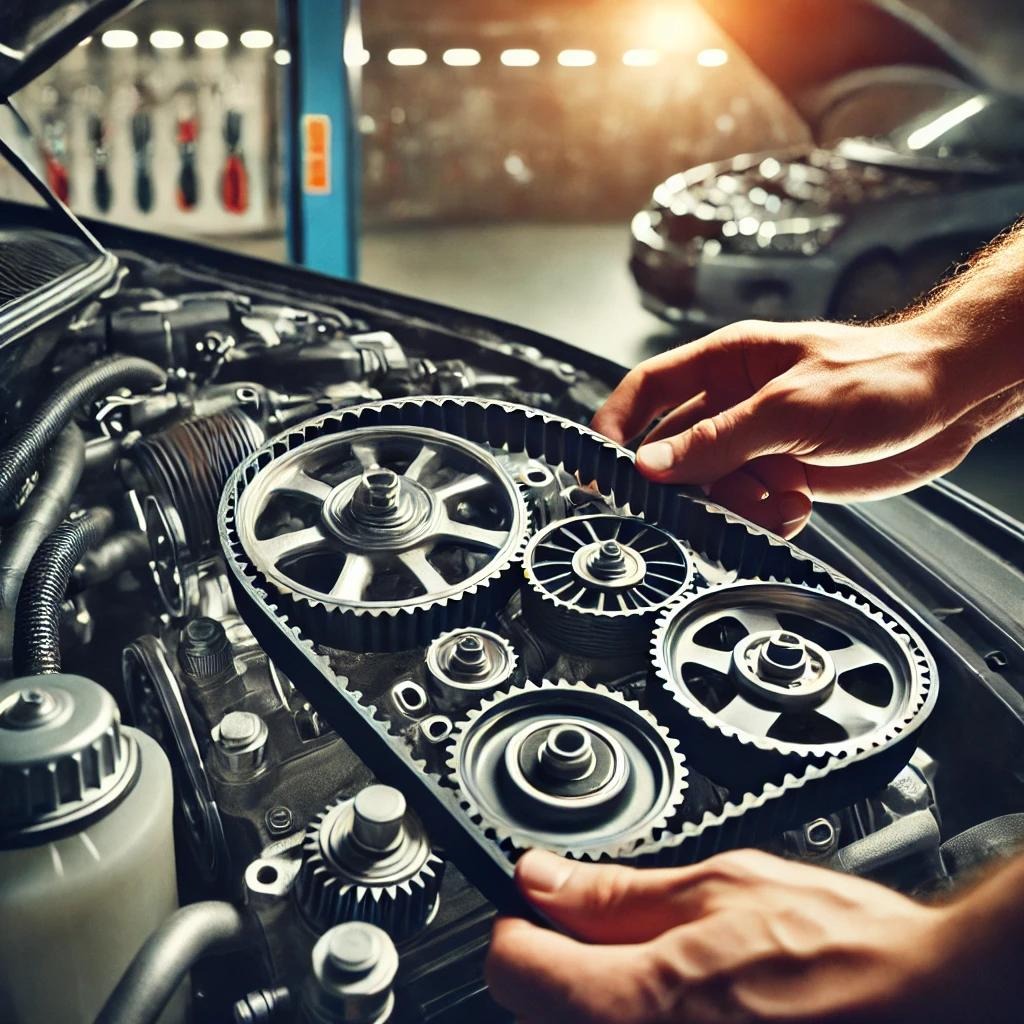What Are Cambelt Tensioners, and Why Are They Important?
What Are Cambelt Tensioners, and Why Are They Important?
When most drivers think about cambelt (timing belt) replacement, they focus on the belt itself. However, the cambelt tensioner is just as important—if it fails, even a brand-new cambelt can snap, leading to catastrophic engine damage.
At Andrews Car Centre in Lincoln, we always recommend replacing the cambelt and tensioner together to ensure long-term reliability. In this guide, we’ll explain:
✅ What a cambelt tensioner does
✅ Why a faulty tensioner can destroy your engine
✅ Signs that your cambelt tensioner needs replacing
✅ Why you should replace the full cambelt kit, not just the belt
If your car is due for a cambelt replacement, this information could save you thousands in repairs.
1. What Is a Cambelt Tensioner, and What Does It Do?
The cambelt (timing belt) synchronises the movement of the crankshaft and camshaft, ensuring the engine’s valves and pistons operate in perfect timing.
🚗 The cambelt tensioner is a critical component that:
✔️ Maintains the correct tension on the cambelt to prevent slack or excess tightness.
✔️ Keeps the cambelt aligned, ensuring it doesn’t slip or jump teeth.
✔️ Compensates for cambelt stretch over time, keeping the system running smoothly.
📌 If the tensioner fails, the cambelt can slip or break, causing severe engine damage.
2. Why Does a Cambelt Tensioner Need Replacing?
Just like the cambelt itself, the tensioner is under constant stress and wear. Over time, the tensioner’s bearings, spring mechanisms, or hydraulic components weaken, leading to failure.
🚨 Common causes of cambelt tensioner failure:
✔️ Bearing wear – The tensioner contains a pulley with bearings that wear out over time.
✔️ Spring fatigue – Mechanical tensioners use a spring that weakens with age.
✔️ Hydraulic failure – Some modern engines use hydraulic tensioners that leak or lose pressure.
✔️ Incorrect installation – Over-tightening or misalignment during a cambelt change can cause premature tensioner failure.
📌 This is why replacing only the cambelt (and not the tensioner) is a serious risk.
3. What Happens If a Cambelt Tensioner Fails?
If your cambelt tensioner weakens, seizes, or breaks, the following can happen:
🚗 Loss of Tension – The cambelt can become loose and slip, causing the engine to misfire or stall.
🚗 Jumped Timing – The belt can jump a tooth on the camshaft or crankshaft, leading to incorrect valve timing.
🚗 Cambelt Snapping – A seized tensioner can cause excessive stress on the cambelt, leading to sudden failure.
🚗 Engine Damage – If the cambelt snaps, the pistons and valves collide, often requiring a full engine rebuild.
💰 A broken cambelt tensioner can turn a £500 cambelt replacement into a £3,000+ engine repair.
4. Signs That Your Cambelt Tensioner Needs Replacing
📌 If you notice any of the following symptoms, your cambelt tensioner may be failing:
✔️ Rattling or grinding noises – This could be a worn-out tensioner bearing.
✔️ Squealing or chirping sounds – The belt may be slipping due to low tension.
✔️ Intermittent misfiring or rough idling – The cambelt may be out of alignment.
✔️ Visible tensioner wear – If you can see the tensioner pulley during an inspection, check for cracks or misalignment.
✔️ Cambelt warning light (on some modern cars) – Certain vehicles have timing belt service reminders.
🚨 If you notice any of these signs, get your cambelt system inspected immediately.
5. Why You Should Replace the Full Cambelt Kit, Not Just the Belt
Many garages only replace the cambelt itself, but this is a major risk. A failing tensioner or worn pulleys can cause the new cambelt to fail prematurely.
🔧 A full cambelt kit replacement includes:
✔️ The cambelt itself – Ensures proper timing and engine function.
✔️ Tensioner pulley – Prevents slack and maintains correct alignment.
✔️ Idler pulleys (if applicable) – Guides the belt smoothly.
✔️ Water pump (on some engines) – If driven by the cambelt, it should be replaced at the same time.
📌 Replacing all components together ensures long-term reliability and prevents costly future failures.
6. How Often Should You Replace a Cambelt Tensioner?
💡 Most manufacturers recommend replacing the cambelt tensioner at the same time as the cambelt.
🚗 Typical cambelt & tensioner replacement intervals:
- Every 5–7 years or 50,000–100,000 miles, depending on the car.
- Some modern engines (Ford EcoBoost, PSA 1.2 PureTech, VAG TSI engines) require earlier replacements due to wet belt design.
🚨 Never assume your cambelt will last as long as the manufacturer claims—real-world conditions often cause earlier wear.
7. Why Choose Andrews Car Centre for Cambelt Replacement in Lincoln?
At Andrews Car Centre, we specialise in cambelt and tensioner replacements, ensuring your engine runs smoothly and safely.
✔️ Full Cambelt Kit Replacement – Includes belt, tensioner, and any necessary pulleys.
✔️ Genuine & OEM Parts Used – Ensuring long-lasting performance.
✔️ Expert Technicians – Experienced in all makes and models.
✔️ Competitive Pricing – More affordable than main dealer costs.
✔️ Fast Turnaround – Get back on the road quickly and safely.
🚗 Don’t risk your engine—if your cambelt is due, book a replacement today!
Book Your Cambelt & Tensioner Replacement at Andrews Car Centre Today!
📞 Call Andrews Car Centre today or book online for a professional cambelt inspection and replacement in Lincoln.
🚗🔧 Andrews Car Centre – Lincoln’s Trusted Cambelt Specialists.

